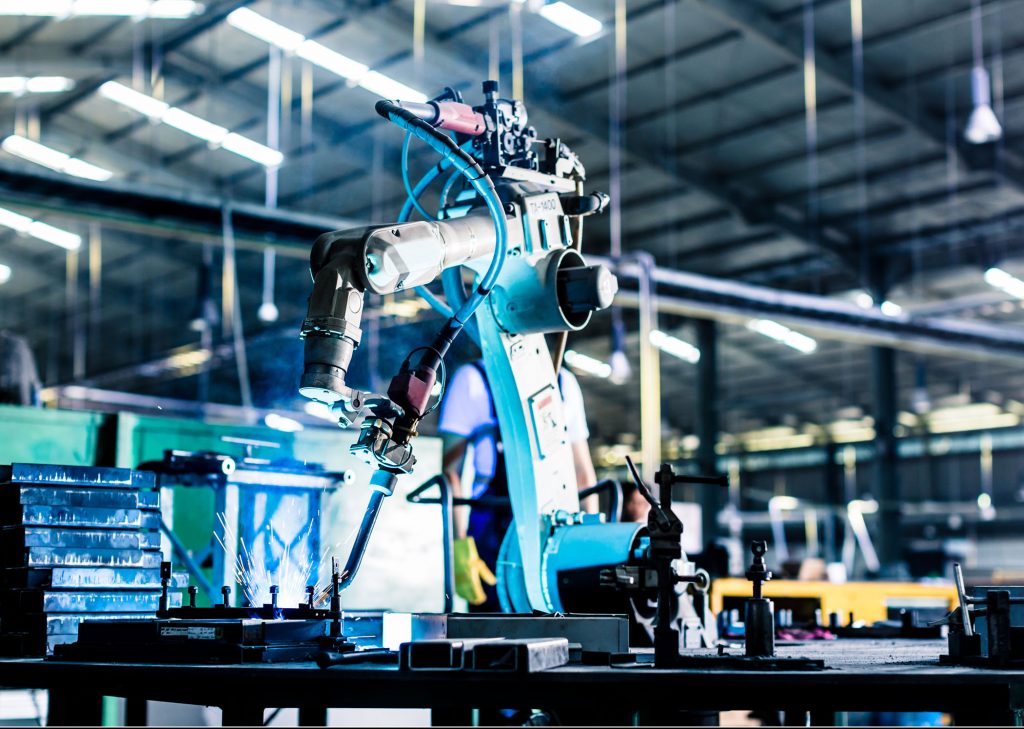Is 5G ready for manufacturing?
High profile scandals aren’t typically good for the technology sector. Whether it’s diesel emissions, large data breaches or cyber-attacks on mission-critical infrastructure, scandal has the power to cripple a technology even before it’s gotten off the ground. Despite what recent headlines may have you thinking,
5G has the potential to be a hugely positive force in the world of manufacturing, heralding in a new era of technological innovation.
While 3G and 4G offered incremental improvements in speed and bandwidth, 5G will be the first cellular, wireless platform to truly offer reliable integration with machine-to-machine and industrial IoT systems.
It will do this in three ways. The first is enhanced mobile broadband (eMBB); 5G offers peak data rates of 10 Gbps and can handle 10,000 times more traffic than its predecessors.
Secondly, it offers Ultra Reliable Low Latency Communications (URLLC). This means it has a radio latency of less than 1 ms and an availability of over 99.9 per cent, making it ideal for industrial use where uptime is critical.
Thirdly, it offers Massive Machine-type Communication (eMTC), allowing it to handle a density of one million devices per square kilometre.
It can also deliver ultra low-cost machine-to-machine communications and can last up to 10 years on battery, great for battery operated low power devices.
So, what does this mean for industry? Well, not only will 5G open the door for real-time wireless sensor networks and location and asset tracking, it will also enable plant managers in smart factories to rely on seamless communication with a fleet of autonomous guided vehicles (AGVs) without worrying about network dropouts.
What’s more, manufacturers that may have been sceptical of adopting the likes of augmented and virtual reality technologies will be able to take full advantage of them for real-time simulation and predictive maintenance.
In industrial automation, 5G networks will eventually be able to replace wired connections in even the most demanding applications such as motion control and high throughput vision systems.
Ethernet protocols are still being standardised by organisations such as 3GPP and IEEE to accommodate time sensitive networks (TSNs) into 5G architecture, which will allow 5G to achieve the low latency and high availability of its ethernet counterparts.
Making the switch to 5G is not a cheap one, with significant investment needed in upgrading infrastructure to accommodate it. Because 5G operates on the less crowded higher frequency spectrum, around 6 GHz — or by using millimetre waves on new radio frequencies anywhere between 30 GHz to 300GHz — it can easily be blocked by obstacles and absorbed by the likes of rain and even humidity.
This will require the installation of small cell networks with smaller antennas placed closer together. As a result, one question that we hear all the time is, is 5G worth all the investment in upgrading technology and equipment to facilitate it?
A recent experiment carried out by Ericsson, in collaboration with the Fraunhofer Institute for Production Technology in Germany, conducted a test in a factory that makes metal bladed disks for jet engines.
The large components are milled in a process that can take 20 hours to complete and involves extremely precise cuts to be made to the metal parts.
The procedure has a high error rate of up to 25 per cent because of faults caused by small vibrations.
However, mistakes are not usually detected until the end of the process, leading to a significant amount of wasted time and money. By adding 5G sensors to the machines, Ericsson was able to reduce the error rate to 15 per cent.
Because it can transmit data in under a millisecond, the integration of 5G into high-value manufacturing processes will enable errors to be detected and prevented on a scale that is not possible using other wireless communication methods.
“With one millisecond latency, you can sense whether there is a deviation in the process before the tool even hits the blade and you can stop the machine before the error happens,” explained Åsa Tamsons, a senior vice president at Ericsson.
Using 5G to reduce the error rate from 25 per cent to 15 per cent lowered the overall production cost of each blade by €3,600.
The results of Ericsson’s test were certainly impressive, but it is important for us to remember that 5G alone will not solve all the problems with inefficiency in our factories.
Manufacturers need to be prepared to invest in infrastructure upgrades — early adopters will face the technical support challenge of retrofitting 5G with existing legacy equipment and networks.
This will require work to manage obsolescence and ensure that plants can continue to make productivity gains without overhauling their entire plant machinery and equipment.
There is no doubt that 5G will revolutionise manufacturing as we know it, but it’s important that manufacturers understand that it’s not a magic pill to solve their productivity woes.
That will still require careful obsolescence management, selective infrastructure upgrades and a willingness to explore the features of the new technology in a diverse range of applications. So, despite the scandals, manufacturers should give 5G serious consideration.


